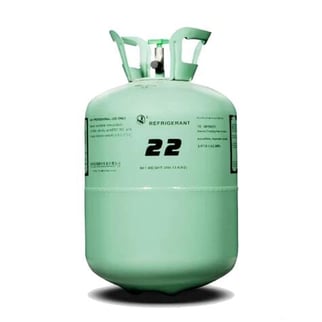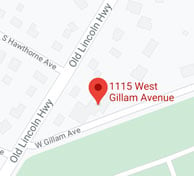R-22 is a refrigerant that has been used in most home air conditioners for more than 40 years. However, the HVAC industry has undergone a significant transformation in recent years due to environmental concerns and regulatory changes. One of the key changes is the phase-out of R22 refrigerant and the adoption of R410A as a more environmentally friendly alternative. In this blog post, we will explore the reasons behind the phase-out of R22, the switch to R410A, and the implications for the future of HVAC systems.
What is R22?

R22, also known as chlorodifluoromethane, is a hydrochlorofluorocarbon (HCFC) refrigerant that has been widely used in various applications, most notably in air conditioning and refrigeration systems. Its primary use is as a refrigerant in HVAC (heating, ventilation, and air conditioning) systems for both residential and commercial purposes. Below are some key uses of R22.
Air conditioning systems
R22 has been a common refrigerant in residential and commercial air conditioning systems for many years. It is used to absorb and release heat, allowing the air conditioning unit to cool indoor spaces.
Refrigeration systems
R22 is also employed in refrigeration systems, such as those found in refrigerators, freezers, and cold storage units. It plays a crucial role in maintaining low temperatures necessary for preserving perishable goods.
Heat pumps
Heat pumps, which can provide both heating and cooling, may use R22 as a refrigerant in certain older systems. However, newer heat pump systems often use more environmentally friendly alternatives.
Why Was R22 Phased Out?
When R22 is released into the air outside, it depletes the earth’s ozone layer, which in turn contributes to worldwide climate change. According to the EPA, all of the emissions of R22 since its creation have resulted in an “ozone hole” over the South Pole. In an effort to protect the ozone layer and slow climate change, international agreements like the Montreal Protocol have worked to phase out all production of R22 and other ozone-depleting substances such as HCFCs, CFCs, and Halons.
The plan to eliminate R22 has been rolled out in phases, the most recent of which occurred in January 2020 when the EPA declared R22 would only be used from recycled and stockpiled quantities. The plan’s final stage is scheduled to be implemented in January of 2030, at which time the government will officially ban the remaining production and import of all HCFCs. The goal is to eventually eliminate not just the production but also the use of R22 and other HCFCs altogether.
Transitioning to R410A
With the regulatory phase-out of R22, the HVAC sought out an alternative refrigerant that prioritizes environmental friendliness and energy efficiency. One such substitute that has gained widespread acceptance is R410A, a hydrofluorocarbon (HFC) blend. Unlike R22, R410A does not contribute to ozone depletion and has a lower GWP. This makes it an attractive choice for manufacturers who want to comply with environmental regulations while maintaining the efficiency and performance of HVAC systems.
Benefits of R410A
Environmental Friendliness
R410A is chlorine-free and has a zero ozone-depleting potential, aligning with global efforts to protect the ozone layer and mitigate climate change.
Energy Efficiency
HVAC systems using R410A typically exhibit higher energy efficiency, resulting in lower energy consumption and reduced greenhouse gas emissions over the lifespan of the system.
Regulatory Compliance
With the phase-out of R22, R410A has become the preferred refrigerant for new HVAC systems. Choosing R410A ensures compliance with current environmental regulations and future-proofs against potential regulatory changes.
Challenges and considerations
While the transition to R410A has been largely successful, it's important to acknowledge certain challenges and considerations.
Compatibility Issues
Existing HVAC systems designed for R22 may not be compatible with R410A. Upgrading systems to accommodate the new refrigerant may require modifications or, in some cases, a complete system replacement.
Long-Term Sustainability
As the HVAC industry continues to evolve, ongoing research is being conducted into other environmentally friendly refrigerants with even lower GWPs. Industry leaders must stay informed about developments in refrigerant technology to adapt to future changes.
How Are Homeowners Affected?
If your air conditioner was manufactured after 2010, it is highly likely that your system is already equipped with the new and efficient refrigerant known as Puron. However, if your HVAC system predates 2010, you may find yourself facing costly repair bills. Because the production of R-22 has ceased entirely, the scarcity has caused the price of R-22 to soar. As a result, obtaining replacement parts for older systems that still rely on R-22 can come at a premium.
Currently, HVAC systems using R22 can still be regularly maintained. However, as the production and import ban continues, the supply of R22 will diminish, making it increasingly difficult to service these units in the future.
With that said, replacing your HVAC system is likely the best option. Although a replacement is cheap, avoiding costly repairs will save you money in the long run while helping the environment at the same time. Newer systems that use R410A are also more efficient, leading to a more comfortable home and even further cost savings.
Conclusion
The phase-out of R22 and the adoption of R410A represent a significant shift in the HVAC landscape. This transition reflects the industry's commitment to environmental responsibility and energy efficiency. As manufacturers and consumers adapt to these changes, it's important to stay aware of emerging technologies and regulations that will shape the future of HVAC systems.

If you live in the Delaware Valley/Greater Philadelphia area and would like to find comfort within your home, visit our website or give us a call at 215 - 245 - 3200 to learn more.



